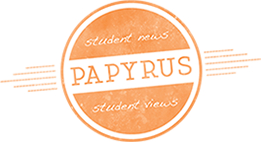Written by Kristyn Ewing. Media by Sara Dawson.
With power comes great responsibility. We as humans have created a program with the intentions that it may be used for art and as a tool of education, but with such easy access and popularity, it has become powerful and our purpose for it has changed. Using this man-made program, our realities have turned into idealism. At what point do we draw the line and set up strict rules and regulations?
As a Graphic Designer, Photoshop is one click away on my computer. My intentions with Photoshop has been to help enhance and fix problem areas that are bothersome. There are people in this world who also have access to Photoshop in an instant, but I do question whether they are using it for art or even responsibly. I believe just because we have access to this program, does not give us permission to completely change what is normal.

Below is a Ted Talk called “Why We Retouch People in Photoshop”. It not only explains how users like myself use Photoshop to edit what is bothersome, but it also explains why we edit a photo in the first place.
“We are 3D objects. It’s not fair what happens when our image goes from this 3D object that moves, breathes, smells, laughs, and has a voice and slaps onto a flat 2D image. What goes away is the movement and your personality. What’s left are all the things you would never notice if you were standing right in front of somebody—those things are gone. Now, not only do your flaws show in a flat picture, but they are amplified.”
I believe that educating ourselves on this topic is very important. We need to understand the power a program like Photoshop has and how to use it whether we want to or not. I believe communication has been lost between clients and artists over the years. Not only are there digital manipulations occurring, but physiological manipulation. We have all heard the stories of the models who blame the agencies for changing who they really are. I find it neat hearing victims speak up, educate others on this topic, and companies finally recognizing that the everyday person wants the real authentic truth, not covered up lies. Doesn’t the truth eventually come out anyway?

I believe with clear communication between both parties, digital manipulation is okay. I have taken senior pictures in the past with self-conscious clients who struggle with acne. With great results of clear skin, I was able to bring a little sunshine to someone’s day. Of course, I made edits with permission of my client, but also my client came to me educated, which is important. As a client, it is your duty to do research before signing up for anything. There’s nothing wrong with asking questions to the photographers before giving them free range.
When we manipulate an image, we get rid of more than just the appearance we don’t like, we get rid of a person’s identity and it can actually affect a person’s self-image. Didn’t we know this was going to happen eventually? In an article called “This Is Who We Are Now”, the popular brand Aerie sheds light on the fact that they used to make edits on their models and since the company has had to change their mindset in order to give their clients what they want—real experiences.
When given power, there is a need for responsibility plus education. I think responsibly, we can view digital manipulation as art. I feel as though I have a better understanding of digital manipulation and I hope you do as well. The biggest question to think about next time you want to manipulate something using Photoshop: What is the purpose?




























